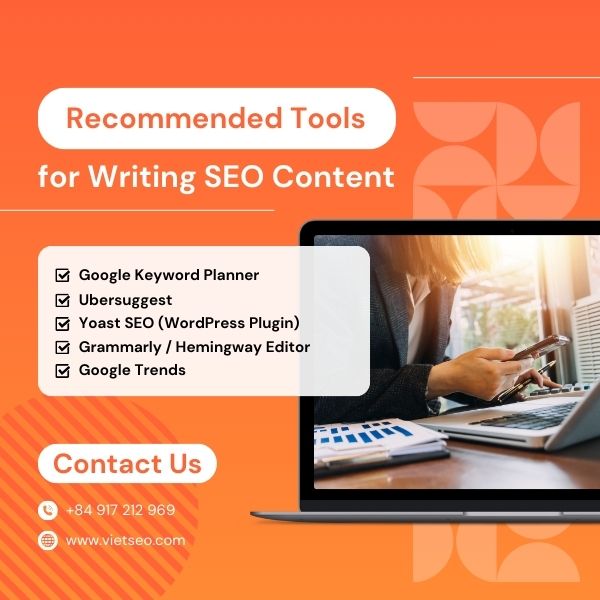What Makes an Article SEO-Friendly? Key Factors for Higher Rankings
What Is an SEO-Optimized Article?
An SEO-optimized article is a piece of content written and structured in a way that makes it easier for search engines like Google or Bing to understand, evaluate, and recommend to users. Instead of just focusing on keywords, a truly optimized article balances two important goals: delivering genuine value to readers and meeting the technical and algorithmic standards that search engines look for when ranking content.
Put simply, writing an SEO-friendly article means combining smart SEO techniques—such as keyword research, clear formatting, and optimized metadata—with strong writing skills that keep the reader engaged. When done correctly, this approach not only boosts your chances of appearing higher in search results but also ensures that your content resonates with real people, builds trust, and attracts the right audience.
Why Is SEO Writing Important?
In today’s digital age, most people turn to Google or other search engines whenever they need information, products, or services. That’s why having articles that are optimized for SEO is no longer optional—it’s essential. An SEO-optimized article increases your chances of showing up in search results, puts your content in front of the right audience, and helps you build meaningful connections with potential customers.
At VietSEO, we believe that successful SEO writing is all about blending valuable, well-written content with smart optimization techniques. This balance ensures that your articles appeal not only to search engines but, more importantly, to real readers who are searching for what you have to offer.
Here’s what effective SEO writing can do for your business:
- Boost visibility: Articles that are properly optimized have a much higher chance of ranking on the first page of search results, where users are most likely to click.
- Attract organic traffic: By showing up for the right keywords, you can bring in a steady flow of visitors without relying heavily on paid ads.
- Strengthen brand credibility: When readers consistently find your high-quality content ranking well, it builds trust and positions your brand as an authority.
- Turn readers into customers: Good SEO writing doesn’t just inform—it guides readers toward taking action, whether that’s making a purchase, subscribing to your newsletter, or filling out a contact form.
Basic Structure of an SEO Article – Insights from Viet SEO
Through years of testing and refining content strategies, Viet SEO has found that an effective SEO article follows a clear, logical structure that benefits both readers and search engines. The goal is to make your content easy to scan, engaging to read, and optimized for ranking. A well-structured article usually contains the following elements:
-
Main Title (H1)
- This is the headline of your article and should include the primary keyword.
- Keep it concise—ideally under 70 characters—so it displays well in search results.
- Write it in a way that sparks curiosity, answers a key question, or directly addresses a reader’s pain point.
-
Introduction
- Provide a quick overview of what the article is about.
- Naturally include the main keyword or a close variation to set the context early.
- Keep it engaging so readers feel encouraged to continue reading.
-
Body Content (H2, H3, etc.)
- Break the article into sections with clear subheadings for better readability.
- Each paragraph should focus on one main idea to keep the content structured.
- Use primary, secondary, and related (LSI) keywords naturally—avoid keyword stuffing.
- Add supporting visuals like images, tables, or examples to make the content more interactive and easier to digest.
-
Conclusion
- Summarize the key takeaways to reinforce the main message.
- End with a strong Call to Action (CTA)—this could be asking readers to subscribe, leave a comment, share the article, or explore related posts.
By following this structure, your article becomes not only more enjoyable to read but also more “search engine friendly,” giving it a higher chance of ranking well and reaching your target audience.
Key Elements of an SEO-Friendly Article
For an article to be truly SEO-optimized, it needs more than just keywords sprinkled throughout the text. It should combine technical optimization with high-quality writing to both satisfy search engines and create a better reading experience. According to VietSEO’s expertise, the following elements are essential:
-
Keywords
- Primary keyword: The central focus of the article. It should appear in the title, H1, URL, introduction, and naturally throughout the content.
- Secondary & LSI keywords: Related terms and variations that expand the article’s meaning, increase topical relevance, and prevent overuse of the main keyword.
-
Heading Tags (H1, H2, H3…)
- Structure your content into logical sections.
- Headings make the article easier to read, skim, and understand for both humans and search engines.
-
Content Length
- The ideal word count depends on your topic and audience, but most SEO-friendly articles fall between 1,000 and 2,500 words.
- Longer, more comprehensive articles often rank higher because they provide depth and authority.
-
Internal & External Links
- Internal links: Guide readers to related pages within your website, helping them discover more of your content.
- External links: Reference credible sources such as research papers, Google, or Wikipedia to boost trust and authority.
-
Image Optimization
- Use relevant visuals to break up text and make the article more engaging.
- Rename image files with descriptive keywords and add ALT tags to improve SEO and accessibility.
-
Keyword Density
- Aim for a natural keyword density of 1% to 3%.
- Avoid keyword stuffing, which can disrupt readability and even harm your search rankings.
-
Page Load Speed
- A slow website discourages readers and lowers rankings.
- Improve speed with optimized images, clean HTML/CSS, caching, and reliable hosting services.
By combining these elements, your article will not only perform better in search engine rankings but also deliver genuine value to readers—keeping them engaged and more likely to return.
Important Notes When Writing SEO Articles
Writing SEO-friendly articles is not simply about placing keywords here and there—it’s about producing high-quality, well-structured content that adds real value to readers while also being optimized for search engines. From Viet SEO’s experience, keeping a balance between technical SEO practices and human-centered writing is what makes content truly effective. Here are some key points to keep in mind:
-
Write for Humans First
- Always prioritize your readers. Your content should be clear, useful, and directly address their needs or questions.
- Avoid forcing keywords unnaturally—if the text feels robotic, readers will leave, and search engines will notice.
-
Avoid Duplicate Content
- Search engines like Google penalize duplicate or plagiarized content.
- Focus on creating original, insightful, and creative articles that stand out from competitors.
-
Keep Content Updated
- SEO isn’t static. Update your articles over time to reflect new trends, data, or algorithm changes.
- Regular updates signal freshness to search engines and improve long-term rankings.
-
Use Natural, Friendly Language
- Your tone should feel approachable and authentic.
- Depending on your audience, choose a style that fits—professional for B2B, conversational for blogs, or even a touch of humor if appropriate.
-
Include a Clear Call-to-Action (CTA)
- Don’t let your article end abruptly. Guide readers toward the next step, whether that’s reading related posts, subscribing to a newsletter, leaving a comment, or making a purchase.
By keeping these points in mind, you’ll create articles that both readers and search engines value—content that ranks well and builds trust over time.
Recommended Tools for Writing SEO Content
Creating SEO-friendly content becomes much easier when you have the right tools at your disposal. These platforms can help you with keyword research, structuring your content, analyzing performance, and improving overall readability. At Viet SEO, we regularly integrate these tools into our workflow to ensure every article is optimized, easy to digest, and aligned with search engine best practices.
-
Google Keyword Planner
- Find the most relevant keywords in your niche.
- Get insights into search volume, competition levels, and user intent.
-
Ubersuggest
- Analyze keyword performance and discover related terms to expand your content’s reach.
- Track how your articles perform over time and identify new opportunities.
-
Yoast SEO (WordPress Plugin)
- Get real-time SEO feedback while writing in WordPress.
- Receive actionable suggestions based on the latest SEO standards and guidelines.
-
Grammarly / Hemingway Editor
- Improve grammar, spelling, and writing style.
- Enhance readability with suggestions for shorter sentences, clearer phrasing, and a smoother flow.
-
Google Trends
- Monitor real-time search patterns across different regions and categories.
- Spot trending topics and popular keywords to stay ahead of the competition.
By combining these tools with strong writing skills and a solid SEO strategy, you’ll produce content that not only ranks well but also resonates with your audience.
Conclusion
Writing an SEO-optimized article today goes far beyond simply inserting keywords—it’s about finding the right balance between engaging storytelling and proven SEO techniques. By following a clear structure, such as an SEO-Friendly Article Template, you can stay focused, avoid common mistakes, and create content that both readers and search engines love.
A well-optimized article allows you to:
- Rank higher on Google and gain visibility where it matters most.
- Attract steady organic traffic without relying heavily on paid ads.
- Build trust and credibility that naturally leads to more conversions.
For beginners, the key is to start simple: research relevant keywords, write valuable and easy-to-read content, and practice consistently. Over time, these habits will turn into skills, and you’ll be able to create SEO articles that generate lasting results for your brand or business.
And if you want to fast-track your success, partnering with Viet SEO services ensures that every article is not only well-written but also strategically optimized from day one. With expert guidance, you’ll save time, avoid costly trial and error, and achieve better outcomes faster.




